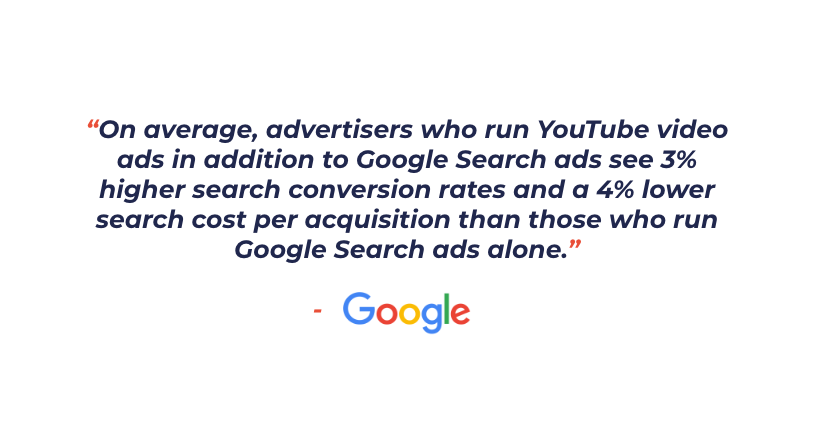Customer journey mapping: Improve experience & sales
Your consumers are the modern internet user looking to purchase online, but how do their customer journey look, and what should you be aware of?
Buyer 2.0 and the customer journey
Over the years, buyer 2.0 has been born. The terminology is reflected because of the shift in global internet usage. The change from buyer 1.0 to buyer 2.0 is how consumers interact online. It has never been easier to get the conversation to flow; this is in all directions, meaning that the conversation is no longer one-sided from the business to consumers because now the consumers can communicate back with positive or negative feedback.
E-commerce has changed. Buyer 2.0 is no longer an easy sell. They research, compare, and explore before making a decision. As a webshop owner, understanding this customer journey is key to reaching them at the right time with the right offer.
Mapping the customer journey through Google
Every purchase starts with discovery. A potential customer finds your product, maybe through Google Shopping, a search result, or a YouTube review. But they don’t buy immediately. Instead, they jump between search results, video content, and customer reviews to gather as much information as possible.
Google’s data shows that shoppers rely heavily on videos to see products in action, check out features, and get real opinions before making a decision. This is where customer journey mapping comes into play. By understanding these touchpoints, you can position your webshop to be there at the right moment.

But discovery and research are just the beginning. A full customer journey map includes several key stages:
Analyse the full customer journey map
Awareness
The customer realizes they have a need or problem to solve. This can happen through social media, online ads, or word-of-mouth. A well-optimized Google Shopping presence ensures your products appear at the right time.
Consideration
Now the research begins. The customer starts comparing products, reading reviews, and watching videos to understand their options. This is where your product listings, website experience, and pricing strategy play a crucial role in keeping them engaged.
Decision
After weighing their options, the customer is ready to buy. The deciding factors often include price, shipping time, trust in the webshop, and payment flexibility. If your price is too high or the checkout process is complicated, they may choose a competitor.
Post-purchase & retention
The journey doesn’t end after checkout. A satisfied customer can turn into a repeat buyer if they receive great service. Follow-up emails, personalized offers, and loyalty programs can strengthen your relationship and encourage future purchases.
When a consumer searches for a product, they are often met with Google Shopping results first. These listings are not random. They are ranked based on Google’s data, including user behavior, demographics, and search history. If your products aren’t appearing here, you are missing a key part of the customer journey map.
By mapping the entire customer journey, you can identify weak spots and optimize the shopping experience at every stage. This makes it easier to attract, convert, and retain customers in an increasingly competitive e-commerce market.
Customer journey mapping examples
Understanding customer journey mapping is one thing, but seeing it in action makes all the difference. A well-structured customer journey map helps visualize how consumers interact with a webshop, identify pain points, and optimize touchpoints for better conversions. Whether you run a fashion store, an electronics webshop, or a subscription-based business, mapping out the customer journey can reveal opportunities to improve the buying experience.
What does a customer journey map look like?
A customer journey map is a step-by-step visual representation of how a customer moves through the buying process. It typically includes:
- Customer Actions: What the customer does at each stage (searching, comparing, adding to cart, abandoning, purchasing).
- Touchpoints: Where interactions happen (Google Shopping, product pages, emails, social media, customer service).
- Pain Points: Where customers experience friction (slow load times, unclear pricing, complicated checkout).
- Opportunities: How to improve the experience (better mobile experience, personalized pricing, dynamic recommendations).
Examples of customer journey maps for E-commerce
To see how different businesses use customer journey mapping, let’s look at a few examples:
Example 1: Fashion webshop
A customer discovers a trending clothing item on Instagram. They search for it on Google, compare different brands, and read customer reviews before deciding to purchase. If they encounter high shipping fees at checkout, they may abandon the cart. A customer journey map helps identify this as a drop-off point and offers solutions like free shipping over a certain amount or an automated discount reminder.
Example 2: Electronics store
A customer searching for a new laptop browses multiple webshops, watches YouTube reviews, and checks Google Shopping for the best price. They may visit a webshop multiple times before making a decision. A customer journey map reveals the importance of dynamic pricing, ensuring competitive offers are visible at the right time to win the sale.
Example 3: Subscription-based webshop
A customer considering a monthly subscription for a product first interacts with an ad, lands on a product page, and reads customer testimonials. They might hesitate before subscribing, needing extra incentives like a free trial or a discount for the first month. A customer journey map highlights this hesitation and provides solutions like retargeting ads or personalized email offers.
How do you win Buyer 2.0?
To increase visibility and conversions, your webshop needs to be present where consumers are searching. Google Shopping has become one of the most effective ways to drive traffic, but just showing up isn’t enough. Pricing plays a critical role.
Search Engine Land found that pricing impacts rankings just as much as an advertising budget. Even if you bid for a top position, a better-priced competitor can outrank you. That is why optimizing your pricing strategy is essential.

Mobile shopping and the customer journey
The way people shop has changed, and mobile devices are now at the center of the customer journey. Buyer 2.0 isn’t just researching products on a laptop. They are scrolling, searching, and comparing prices on their phones at any time of the day.
More than half of online purchases now happen on mobile devices, and this shift has made speed and convenience more important than ever. If a webshop isn’t optimized for mobile, potential customers will move on to a competitor with a smoother experience.
When a consumer searches for a product on Google, they are often met with Google Shopping results tailored specifically for mobile users. These listings are designed to be quick, visual, and easy to compare, making mobile visibility essential for any webshop. If your products aren’t showing up at the top of these results, you are losing potential sales.
How to adapt to mobile shopping behavior
To capture Buyer 2.0, your webshop needs to fit into the mobile-first journey. Here’s how you can do that:
- Ensure your webshop is fully mobile-optimized: A slow or clunky mobile experience can lead to abandoned carts.
- Use mobile-friendly Google Shopping ads: Tailor your product images and descriptions for smaller screens.
- Optimize for voice search: Some mobile shoppers use voice chats like Siri and Google Assistant to search for products.
- Streamline the checkout process: Offer quick payment options like Apple Pay, Google Pay, and one-click checkouts.
Buyer 2.0 expects a fast and seamless experience, and mobile shopping is a major part of their journey. If your webshop isn’t ready for it, you are missing out on a huge share of potential customers.
Set the right price with PriceShape.
A crucial part of the customer journey map is pricing. At PriceShape, we provide dynamic pricing solutions that adapt to market trends and competitor strategies. Our platform automates pricing based on your defined rules, ensuring you remain competitive in real-time.
Additionally, our data-driven insights help identify your best-performing products, allowing you to allocate your Google Shopping marketing budget more effectively. By understanding the customer journey map, you can refine your approach, enhance customer engagement, and drive more sales.
Winning Buyer 2.0 starts with understanding their journey. Let PriceShape help you optimize your strategy. Check out all how PriceShape can help your business improve.


